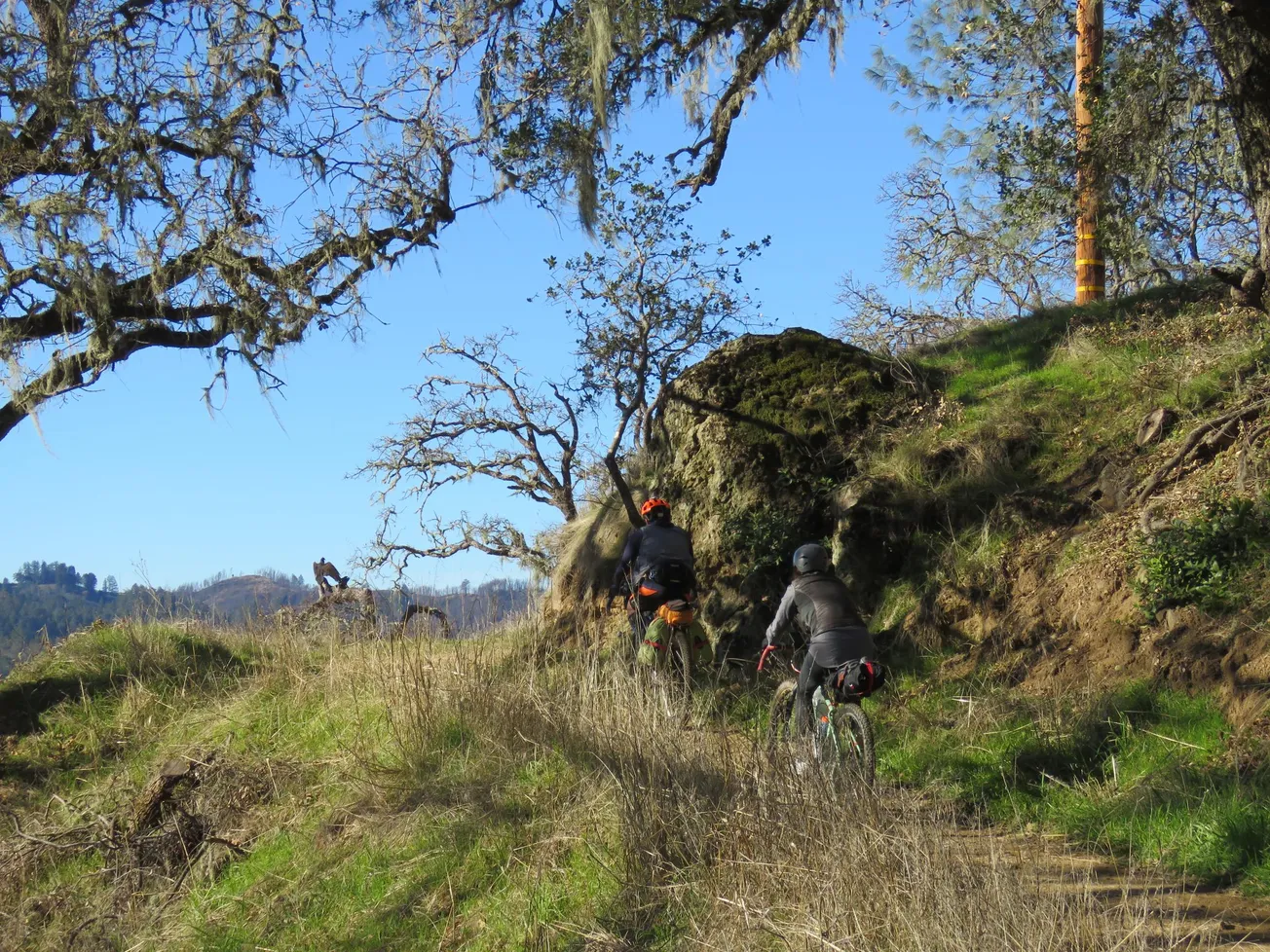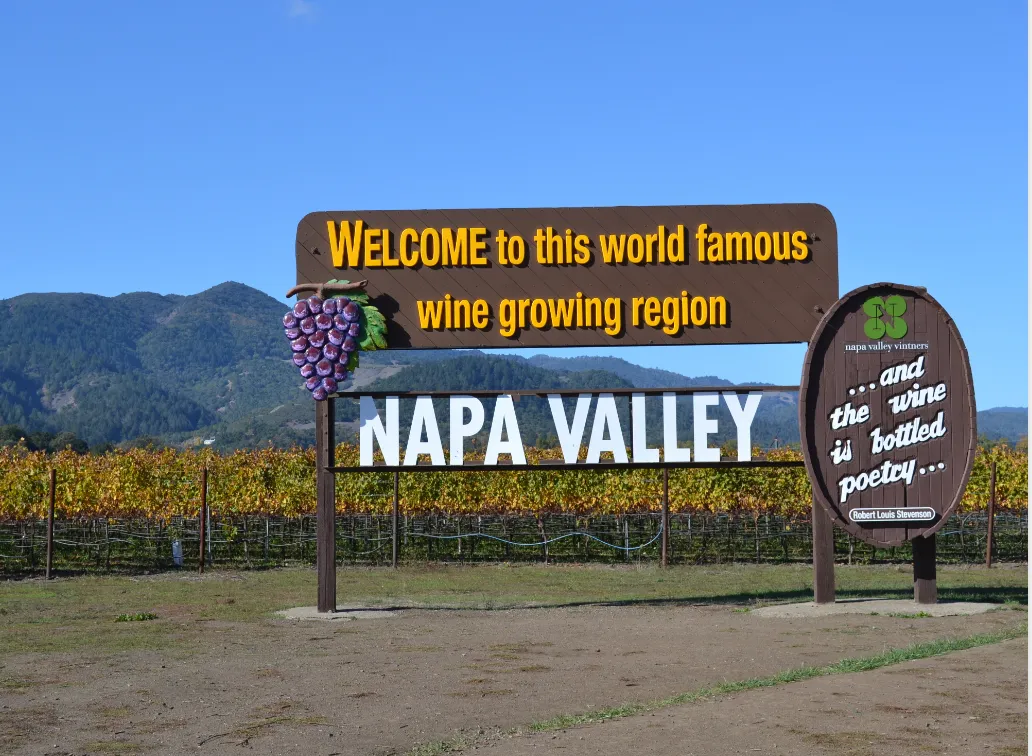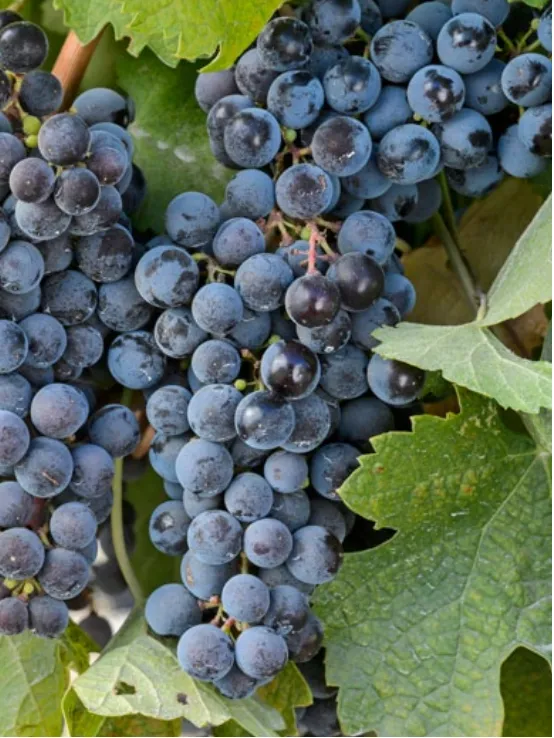A walk on the historic Oat Hill Mine trail in Calistoga is an invitation to a range of sensations. It can provide both a sanctuary of stillness above the Napa Valley as well as vignettes from natural and historical features along the rock-strewn path.
As I park at the trailhead near the intersection of Highway 29 and the Silverado Trail, I can see my breath on this cold winter morning. The momentary misty cloud makes me glad I tossed my gloves and hat into the car.
The cold weather also makes me wonder how plants protect themselves and tolerate freezing temperatures. Native California plants and trees along this trail — grey pines, toyon, lichens and other hearty species — have learned to reduce the amount of water in their limbs and tissues, and some turn on a special protein to encourage a freezing-tolerant attitude to ensure winter survival.
Details from local geologist Dean Enderlin tell us that this trail earned its name because part of it was created to transfer mercury, also known as quicksilver, for use in gold and silver mines following the discovery of gold in California. Oat Hill Mine’s road, begun in 1873, took nearly 20 years to complete.
Mercury was mined in Napa, Sonoma and Lake counties in the 1800s, when it was utilized to obtain the rich metals from crushed ore in a procedure known as amalgamation. In the 1900s enhanced methods of extracting valuable gold and silvers from the ore were developed using mercury.
Cinnabar, a red mineral used in a geologist’s streak test, contains mercury. Cinnabar and mercury can be found in many volcanic regions, including Napa, Sonoma and Lake counties. Mercury found locally was often heated or vaporized and condensed through a complex cooling process. The liquid-like, silver-hued metal was amassed in large iron or steel flasks. A flask typically held 76 pounds of quicksilver.
Some portions of the Oat Hill Mine trail today retain the wagon-wheel marks of the freight wagons that hauled the weighty, mercury-laden flasks down to Calistoga Depot for transport. The depot was erected by Sam Brannan in 1868, just one year prior to completion of the Transcontinental Railroad. Today, the Depot on Lincoln Avenue is California Historical Landmark number 687.
Oat Hill Mine trail, which tracks the historic route between Calistoga and Aetna Springs Road in Pope Valley, is 8.3 miles long, with an elevation that rises from 400 feet at the gate to more than 2,000 feet at the Palisades. The historic mercury mines located further north are closed to the public.
When all points of the trail are open, you can access the Oat Hill Mine Trail three ways: via the Calistoga Trailhead, where hiking, bicycling and horseback riding are allowed, at the Palisades Trailhead and at the Aetna Springs Road Trailhead. (Currently, a trail advisory on the Napa County Regional Park Open Space District website indicates that the trail is closed between Palisade Trail junction at Holms Place and the Aetna Springs Trailhead.)
You do not have to mosey far from the trailhead to begin encountering charming views of the Napa Valley below. The sinuous trail reveals a new show at each turn.
Striking feathers of pastel-green lace lichen wave from extended oak limbs along the way. Lace lichen (Ramalina menziesii), sometimes called Spanish moss, is California’s state lichen and can be identified around much of California, both north and south, growing as far inland as 130 miles from the coast.
This netlike green-to-grey composite organism stems from algae or cyanobacteria; its scientific classification is in the fungi kingdom. Lace lichen and many more of the approximately 1,900 species of lichens in our state hold a significant place in the ecosystem. Much like a canary in the mine, lichens are considered markers to keep an eye on climate change and air quality.
Lichens are used by many animal species as camouflage and nesting matter, and deer consume them as a food-source as well. Today, extracts from lichen are scrutinized by scientists as possible sources of antibacterial medicines.
Along the trail are gray pine, Douglas fir, cypress and chaparral. A grassland habitat found farther on also holds an important role in the ecosystem, since it provides foraging for deer and small mammals and creates an anchor for the soil to aid in erosion prevention.
Each season on the trail has singular rewards. A winter walk reveals bird-viewing opportunities to surprise and delight you along the way. Vultures, scrub jays, acorn woodpeckers and different hawks are just a few bird species that consider the trail their sanctuary. A hike in springtime promises outstanding wildflower viewing.
You will also encounter interesting geologic features. Marks from an old quarry site reveal lava, with its distinctive blue-grey weathered surfaces that conceal miniscule feldspar crystals. Indications of ancient volcanism originating from the Sonoma volcanic field include rhyolite tuff or debris left over from lava.
Windsong blows through a canopy of towering trees and creates subdued light below.
Nature’s beauty elicits a range of emotions that can be soothing, extracting quiet astonishment and profound joy or can leave you spellbound by the layers upon layers of life, history and geology that surround you.
Retracing my steps, I meet extravagant expressions of the Napa Valley with its lush rows of dormant vines lined with verdant grass that mocks winter.
Nature dazzles.
If you go: The trail is open from sunrise to sunset. The main parking area is at 2082 Oat Hill Mine Trail, Calistoga, There are no fees and all trails are multi-use. No potable water is available at the park. Dogs are allowed but must be under voice command at all times. No hunting or shooting is allowed.
For more information about the Oat Hill Mine Trail, visit napaoutdoors.org/parks/oat-hill-mine-trail/.
Kahtleen Scavone is a naturalist and author who lives in Lake County.








